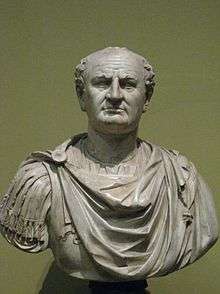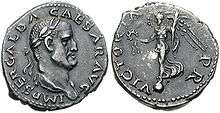Verism

Verism is the artistic preference of contemporary everyday subject matter instead of the heroic or legendary in art and literature; it is a form of realism. The word comes from Latin verus (true).
Roman Art
Verism first appeared as the artistic preference of the Roman people during the late Roman Republic (147–30 BC) and was often used for Republic portraits or the head of “pseudo-athlete” sculptures. Verism, often described as "warts and all", shows the imperfections of the subject, such as warts, wrinkles and furrows. It should be absolutely noted that the term veristic in no way implies that these portraits are more "real". Rather, they too can be highly exaggerated or idealised, but within a different visual idiom, one which favours wrinkles, furrows, signs of age as indicators of gravity and authority. Age during the Late Republic was very highly valued and was synonymous with power as one of the only ways to hold power in Roman society was to be part of the Senate. Yet to be on the Senate a Roman patrician had to be at least forty-two years of age, which in relation to ancient times was considered mature stage of life.[1]:37
It is debated among scholars and art historians about whether these veristic portraits were truly blunt records of actual features or exaggerated features designed to make a statement about a person’s personality.[2]:54 As it is widely believed in academia that in the ancient world physiognomy revealed the character of a person the personality characteristics that were seen in veristic busts expressed certain virtues that were very much admired during the Republic.[2]:54 Yet scholars can never know for certain of the accuracy of the portraiture since all were not alive during that period of time.
Verism throughout the Roman Empire
As stated in the section above, verism first appeared during the Late Republic. The subjects of veristic portraiture were almost exclusively men and the men were usually of advanced age, for generally only elders held power in the Republic.[2]:53 However, women, to a lesser extent, are seen in veristic portraiture as well and were almost always depicted as elderly persons.[2]:53 A key example of this is a marble head found at Palombara, Spain. Carved between 40 BCE-30 BCE, during the decade of the civil war that followed Julius Caesar’s assassination, the woman’s face shows her advanced age.[2]:54 The artist carved the woman’s sunken cheeks and pouches under her eyes to illustrate her age much like male veristic portraiture of the time.[2]:54
While in the height of fashion during the Late Republic era verism quickly fell into obscurity when Augustus and the rest of the Julio-Claudian dynasty (44 BC-68 AD) came into power. During this imperial reign Greek Classical sculpture that featured eternal youth was favored over verism. It wasn’t until after the suicide of Nero in 68 AD that verism was revived.

During the Year of the Four Emperors (68-69 AD) that resulted from Nero’s suicide when Galba, Vitellius and Otho all grappled for the throne verism made a resurgence as seen in obverse portraits of Galba on bronze coins or marble busts of Vitellius. When Vespasian and his sons came to the throne the Flavian dynasty harnessed verism as a source of propaganda. Scholars believe that Vespasian used the shift from the Classical style to that of veristic portraiture to send a visual propagandic message of distinguish himself from the previous emperor. Vespasian’s portraits showed him as an older, serious, and unpretentious man who was in every respect the anti-Nero: a career military officer concerned not for his own pleasure but for the welfare of the Roman people, the security of the Empire, and the solvency of the treasury.[2]:123 Just like the Romans from the Late Republic, Vespasian used veristic busts to underscore traditional values as a way to indicate to the Roman people a connection to the Republic.[2]:123 With the remembrance of the Late Republic many Roman citizens were put at ease knowing Vespasian was truly not like the previous emperor Nero, who represented everything the Republic abhorred. Yet after the Flavian period verism again faded into obscurity.

Verism in Academia
Veristic portraits of the late Republic hold a special fascination for classical art historians. Romans had inherited the use of sculpted marble heads from the Greeks but they did not inherit the veristic style from them. To scholars verism is uniquely Roman. Scholars have put forth multiple theories as to what or who were the precursors to Republican portraiture. Yet what is important to note is that there is not one single accepted theory of the origin of verism. The question of veristic style remains to this day essentially open and unresolved. Each theory, while plausible in its own way, will require further research and adequate consideration among scholars.
First Theory

Scholars believe the ancient Italic peoples had an inclination to veristic representation leading to influence on later Roman art.[3] From a central Italian provenance in ancient times tribes from this area used Terracotta and Bronze to make a somewhat realistic portrayal of the human head.[1]:30 Yet the ‘Italic’ heads, as they are called, are not seriously considered to be a favorable or strong theory held among scholars as being forerunners to the Republican portraits.[3] Scholars note that none of the realistic looking specimens can be shown to be earlier than the arrival of the new wave of Greek influence, rather than vice versa.[1]:30
Second Theory
Scholars debate whether the heads of reclining figures on Etruscan cinerary urns are the forebears to Republican portraiture.[1]:30 In Etruscan culture it was traditional and very common in Etruscan art to provide a naturalistic look to figures. Many cinerary urns are realistic looking or at least have harshly treated faces.[1]:30 Scholars debate whether the realistic-looking style of head of these figures were a native creation which influenced the Romans, or whether the Romans influenced Etruria.[1]:31 The issues relating to chronological time casts doubts as to the accuracy of the theory.
Third Theory
Scholars consider the ancient Roman custom of making wax portraits, known as funerary or Death mask, of their ancestors as a convincing source for the veristic style. H. Drerup, a man of academia, argues that death masks molded straight from the face were early in use at Rome and exerted a ‘direct influence’ on Republican portraits.[1]:31 Yet research has cast doubt on this theory. None of the funerary masks date before the 1st century AD. Evidence suggests the ancestral funerary masks merely kept pace with contemporary portraits in the round.[1]:31 Chronology seems to be an issue with supporting the theory.

Fourth Theory
Scholars debate whether Egyptian influence started Roman verism. A group of portraits in hard Egyptian stone from the Roman Ptolemaic Kingdom show a harsh realism that is similarly seen in Republican portraits.[1]:32 Scholars believe the Egyptian portraits began to be made before the Republican portraits and strongly influenced the Romans into establishing the veristic style when Egyptian priests and cults came into contact with Italy and Greece.[1]:32 Although this theory like the others has merit, lack of concrete dating of this certain Egyptian style makes scholars doubt the creditability. Suggested stylistic dates often fluctuate by two or three centuries leaving scholars with no solid evidence for when the style of harshly realistic Egyptian portraiture begun.[1]:31 Historians also note Romans did not have extensive military or commercial contact with Egypt before 30 BCE, which was after the Late Republic when verism was being used on portraiture.[1]:32 Scholars conclude that it is unlikely that Egyptian portraits influenced the Republican style.
Fifth Theory
Another theory presented to scholars in classical academia suggests that verism came about from Greek reactions to the conquering Romans. The theory goes that Romans in the Republic privately cherished the Hellenistic culture yet still held onto Republic values.[1]:34 This interest leaked similar portrayals seen in the more realistic Hellenistic royal portraits of the Pontic and Bactarian kings of the first half of the 2nd century BC, such as the slight turn of their heads and upward glance of the eyes, into Roman veristic busts.[1]:34 As Rome conquered Greece the empire saw an influx of talented Greek artists who were commissioned by the Romans to create their portraits that portrayed both the Hellenistic look and Republic values. It should be noted that Greek artists notoriously portrayed foreigners in an unfavorable light as a result of Greek attitudes of superiority.[1]:35 For the Romans the Greeks found them not only to be foreigners, yet to be increasingly pompous and unlikeable oppressors.[1]:35 Greek artists were little concerned to put the sitter’s case favorably and portrayed Romans with an unsympathetic likeness.[1]:35 As a result, the Greek artist would maintain the Hellenistic ‘pathos formula’ – turn of the head and neck, eyes looking upward – but the Greek sculptor, rather than adapt the Roman’s features to a Hellenistic ruler ideal, had concentrated on bringing out an air of caricature to the face leading to what scholars call veristic portraiture.[1]:36
Some scholars refute this theory as being the cause of verism. Scholars doubt that Romans would not have been angered by the caricature like portrayal given to them by the Greeks. Many question why the Romans did not punish the Greeks for this obvious slight. Yet scholars who are in favor of this theory state that the Romans simply didn’t care for this over realistic portrayal. The Republic values of that time favored the straightforward and honest Roman citizen who did not need the deceits of art, but instead should be portrayed as they were, without artifice, for this would best bring out their Republican values.[1]:37 As a result, some art historians, like R. R. R. Smith, believe verism originated from the negative Greek attitudes, if not somewhat unconscious attitudes, the artists felt towards these particular foreign clients, which was allowed to work itself into the Roman portraits because the artists had been freed from the usual obligation to flatter and idealized the sitter and instead allowed to sculpt without artifice.[1]:38
External links
| Look up verism in Wiktionary, the free dictionary. |
References
- 1 2 3 4 5 6 7 8 9 10 11 12 13 14 15 16 17 18 19 20 Greek, Foreigners, And Roman Republic Portraits, Cambridge Journals: The Journal of Roman Studies, 1981
- 1 2 3 4 5 6 7 8 A History of Roman Art, Enhanced Edition, Wadsworth CENGAGE Learning, Boston, 2010
- 1 2 Richter, The Origin of Verism in Roman Portraits, p. 39.